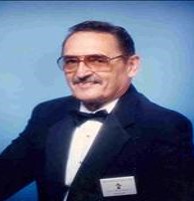Roy Ingersoll -- Borg-warner

Click for PDF version of Roy Ingersoll -- Borg-warner -- Biography
Introduction
 Picture of Roy Ingersoll -- Borg-warner
Picture of Roy Ingersoll -- Borg-warner
"Very few American corporations practiced formal planning prior to 1950" (p. 59). "Chicago-based Borg-Warner was one of the pioneer planning firms" (p. 59). Borg-Warner, under the leadership of Roy Ingersoll, introduced a formal planning system in 1950. In 1957, approximately 200 large companies had formal planning departments. "A decade later over 1,000 corporations had formal planning departments" (p. 59).
The company Borg-Warner was formed in "an attempt by five automobile industry suppliers to offset the growing bargaining power of their major customers, Ford Motor Co., General Motors, and other automobile companies" (p. 59). Four of these companies merged in 1928. "The fifth company, the Ingersoll Steel and Disc Co., joined Borg-Warner in 1929" (p. 59). After the merger, Borg-Warner created five divisions, allowing each company to operate as they had previously. The leader of each company served on the Board of Directors.
Roy Ingersoll's company experienced dramatic growth before its merger with Borg-Warner. "Ingersoll's business was the manufacture and sale of steel discs for use in agricultural implements" (p. 60). The company experienced a 1,300 percent increase in sales between 1910 and 1921, but had only a small share of the market. Ingersoll began research on a disc "with greater durability than that offered by the competitors" (p. 60). After a more durable disc was developed, "Ingersoll greatly increased his market share" (p. 60).
When the Great Depression hit in 1929, Ingersoll's business dropped 85 percent. Ingersoll looked for alternative uses for discs, and found that he could make discs for truck wheels. Because the company that sold most truck discs in America had a patent on their product, Ingersoll had to develop an alternative method to produce discs, which he patented.
"In 1910 Roy Ingersoll had temporally taken over management of a bankrupt steel mill that had been supplying Ingersoll with a specialty steel needed for his discs" (p. 61). Ingersoll "was able to 'turn the financial situation at the steel mill around'" (p. 61). After determining his ability in "turnaround situations" (p. 61), he began looking for other steel companies in financial trouble. In 1930, 1935, and 1937, Ingersoll persuaded Borg-Warner to purchase troubled steel companies.
Shortly after WWII ended, Borg-Warner's Board of Directors established a corporate-level research unit to develop an automatic transmission. This was the first long-range planning used, and "the corporate-level approach to research was continued and became a source of new product ideas for the entire corporation" (p. 62). The contract reached with Ford to sell Borg-Warner transmissions stipulated that Ford could manufacture its own transmissions after 1958.
"In 1950 Roy Ingersoll was elected president of Borg-Warner" (p. 63). Ingersoll adopted "a system of long-range planning" (p. 63) that allowed Borg-Warner to develop new products to offset the loss of products like the automatic transmission. "The system had many of the features of what later came to be called strategic planning" (p. 63). "Each Borg-Warner division was asked to actively search for new product areas where the company's strengths would enable it to compete successfully" (p. 63). Borg-Warner's decentralized organizational structure made this planning system easy to implement.
This planning system required each division to prepare a five-year, detailed plan. The plan included: long-range goals, five-year sales forecasts, research and development programs, manufacturing facilities, and financial and human resource requirements for five years. "During the 1950s Roy Ingersoll devoted his efforts to the tasks of convincing the management at lower levels to take planning seriously, and of completing the acquisitions needed for growth" (p. 64).
"In 1961 Robert Ingersoll succeeded his father, Roy, as chairperson of Borg-Warner" (p. 65).
Borg-Warner Corporation
200 South Michigan Avenue
Chicago, Illinois
*Copyright 2002. The American National Business Hall of Fame. All rights reserved. No portion of ANBHF may be duplicated, redistributed or manipulated without the expressed permission of the ANBHF.
Copyright 2001 American National Business Hall of Fame. All Rights Reserved.

